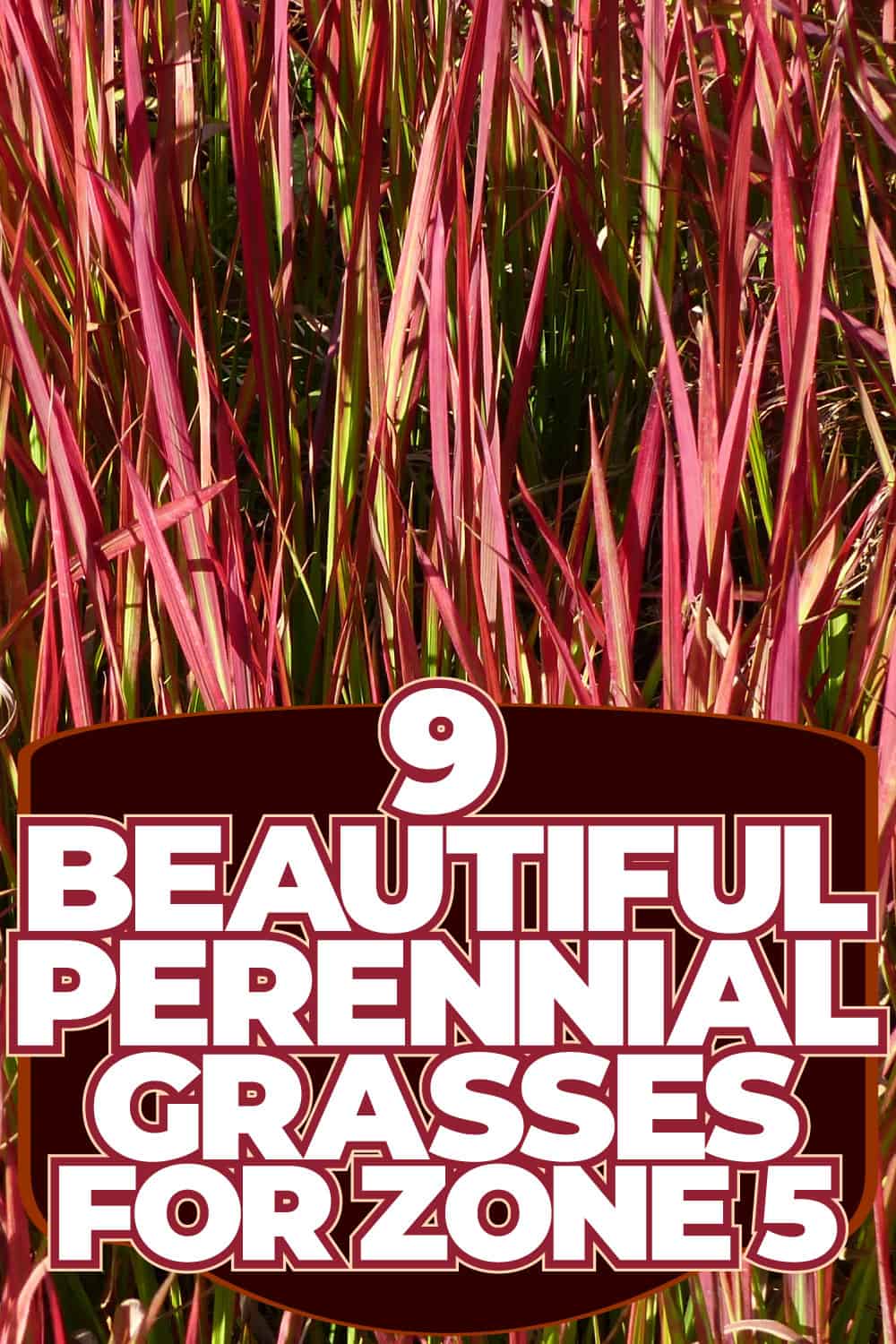Growing and collecting plants has become a viral sensation. It has undoubtedly sparked our love for beautiful plants and our landscapes.
That leads to the question of which perennial grasses are best for people living in USDA zone five. Luckily, we've done extensive research into this zone and perennial grasses and have some ideas!
If you live in Zone 5, you can easily grow ornamental grasses such as:
- Japanese Blood grass
- Indian grass
- Switchgrass
- Little Bluestem
- Purple Love grass
- Muhly grass
- Festuca Glauca
- Miscanthus Maiden grass
- Fountain grass
Now that you have an idea of the perennial grasses you can grow in your garden, it might be helpful to learn more about them. Keep reading as we guide you on how to grow and take care of these ornamental grasses. We might help you choose the perfect addition to your garden!
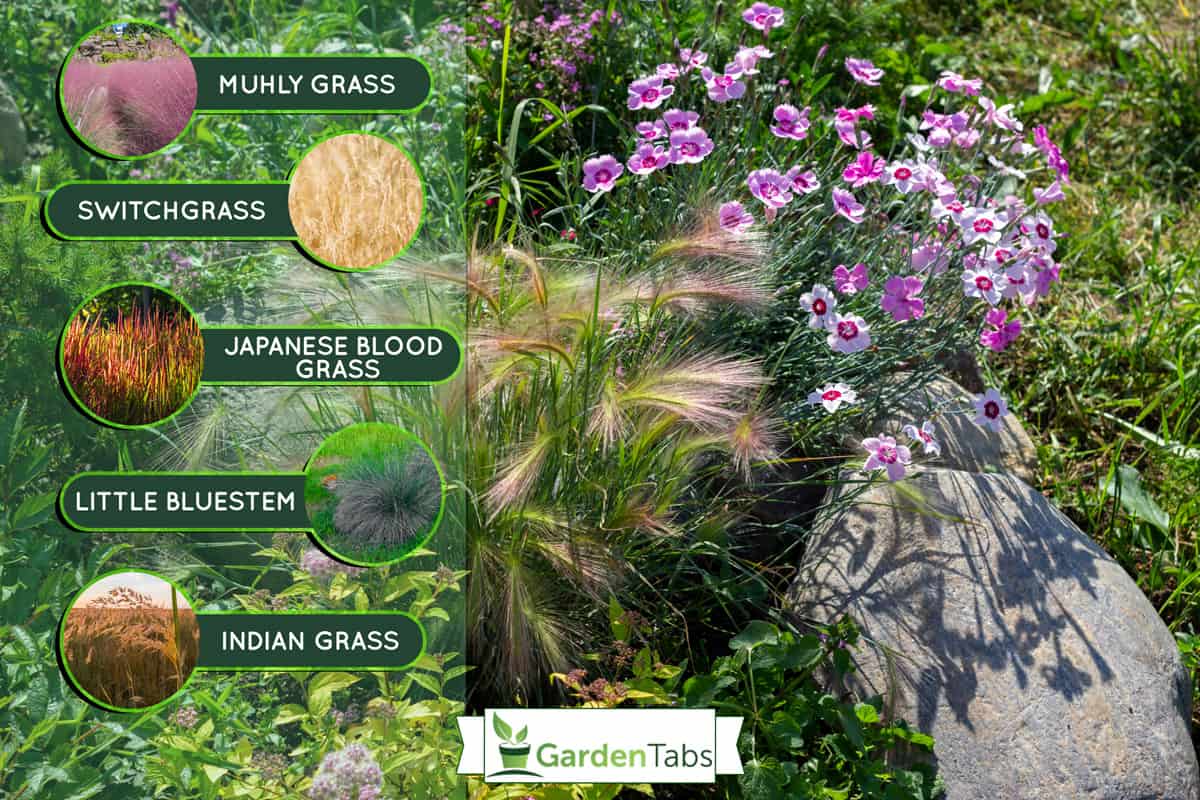
Perennial Grasses For Zone 5
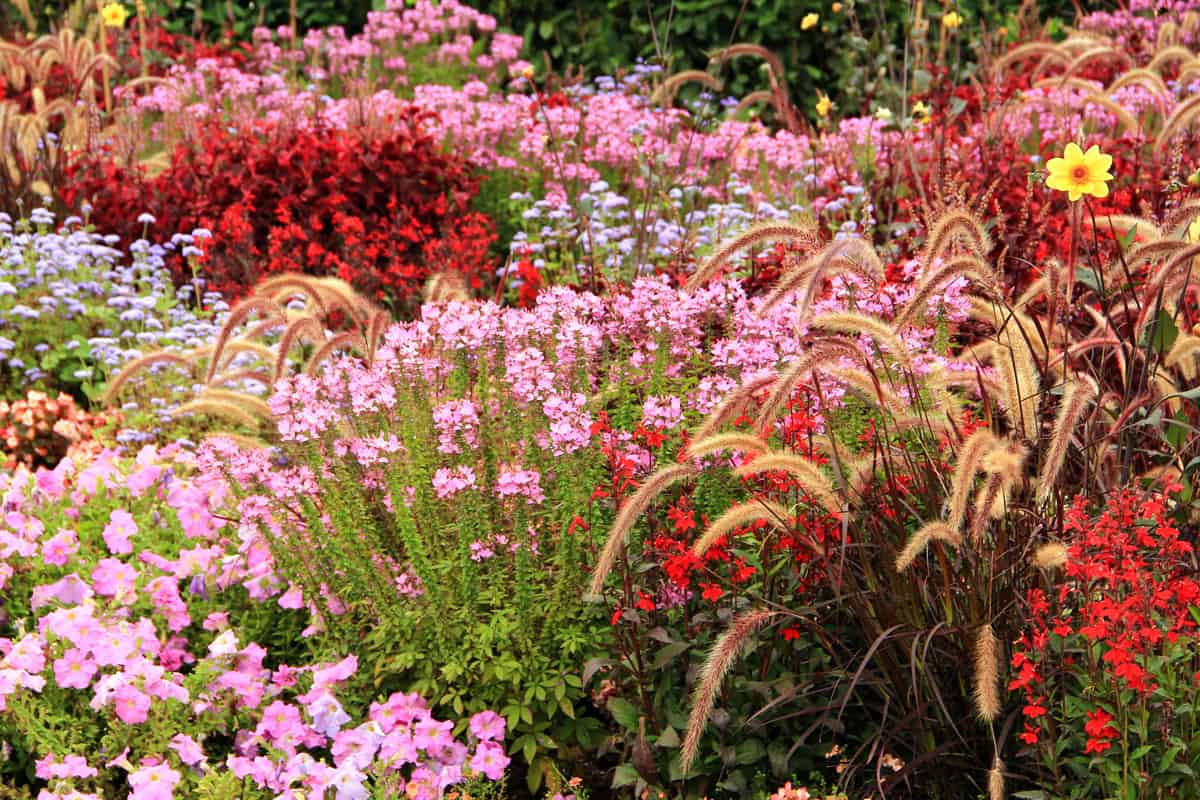
Below are the perennial grasses that grow beautifully in Zone 5 areas.
Japanese Blood Grass (Imperata)
Japanese blood grass is a beautiful, red-tipped perennial grass that gets redder each season. It is perfect if you want that extra “oomph” in your collection.
It adds a different accent to your garden's red leaves in the fall. Just cut down any blades that turn green to keep the red hue.
This grass only needs direct sunlight to partial shade and moist, well-drained soil. To keep your plant healthy, apply granulated fertilizer to the roots after six weeks. Don’t forget to trim the leaves on the first frost!
Indian Grass
The Indian grass, or Sorghastrum nutans, is one interesting grass.
This grass introduces burnt orange foliage to the landscape during autumn, which then turns into a beautiful golden brown in the late summer to the start of winter. Perfect for that sultry vibe, right?
Indian grass is known to be drought and heat tolerant. This plant also prefers full sun and grows in floodplain prairies, much like in its native state.
Though this grass thrives best in moist gardens, it can also adapt to soil conditions like sandy, clay, acidic, and even alkaline.
Switchgrass
Switchgrass (Panicum virgatum) is an upright grass that has fine-bladed foliage. It is bluish-green most of the time, producing a soft haze and then turning into deep red to purple feathery, delicate flowers in the late summer.
This grass can grow 4 to 6 feet tall, so it is best to place them on the rear or edges of your garden.
This plant enjoys full to partial shade and can tolerate salt exposure and a short period of droughts. It prefers well-drained soil with some nutrient levels.
Thus, you must incorporate organic matter such as compost into its planting hole.
Little Blue Stem
Schizachyrium scoparium is a perennial warm-season grass with bluish color that deepens into rusty mahogany in the fall.
Growing them into your landscape provides additional dimensions for your other flowering plants. In addition, avian wildlife feast on their seeds while dispersing them to other places.
Little blue stems are very low maintenance as there are no serious pest or disease threats. There is even no need for nitrogen application during its first year.
You need supplemental water in the early stages for the establishment, but quite after, it is already self-sufficient.
Purple Love Grass
Eragrostis spectabilis is a finely textured grass green in summer and becomes covered with a cloud of fine purple plumage in the late summer or fall.
This is particularly striking in a crowd of plants as it looks like a pink or purple mist from a distance. Because of their beauty, they are commonly used in everlasting arrangements.
Purple Love grass prefers full sun to partial shade. This stunning grass requires exceptionally well-drained and sandy soil. However, once the plants are established, they only need a little care.
They can tolerate drought and can even be used in xeriscaping. Watering and fertilizing are unnecessary.
Muhly Grass
Muhlenbergia has a spectacular showgirl flair. It is certainly the "it girl" of the ornamental grass bunch.
It can easily catch your eye with its pink to purple inflorescences, which float above the plant's body in an airy display worth of a fairy princess.
Muhly grass is one of the easiest ornamental grasses to care for. It loves the sunlight and quickly grows in any well-drained soil. Since it does not like wet feet, you only need to water muhly grass babies.
Once they are mature, only give the supplemental amount of water during a severe drought.
Festuca Glauca (Blue Fescue)
This perennial grass has been popular in gardens across the country for several centuries. Its greenish-yellow flowers add an interesting texture to the foliage.
Cool-season grass grows about six to ten inches tall, making it an excellent choice for pots, border edging, and bulk plantings.
These plants prefer the sun to part shade and dry sandy soil. In prolonged droughts, however, supplemental water may be needed.
It does not like heavy wet soil, so you just sprinkle some water, and you are good to go.
Miscanthus Maiden Grass
Miscanthus maiden grass has a regal appeal and an elegant décor on the front porch or the driveway. This group of grasses has spectacular plumes and bronze to burgundy-colored foliage.
It has several varieties, "Purpurescens" is red in summer and red in fall, while "Silver feather" has shimmering whitish silver inflorescence.
These grasses thrive in full sun and require well-drained soil. It tolerates excess moisture and dry, acidic, or hard clay sites. Grass care is even simpler as it has no known pests or disease problems except rust.
Rust is a fungal disease transmitted to leaves when splashed with water. So, it is best to water the plants under the foliage.
Fountain Grass
Fountain grass is a crowd favorite of garden lovers. True to its name, the cascading leaves look like a fountain-like appearance. Its tan, pink or purple flowers bloom from late summer through fall.
Fountain grass enjoys full sun but can also tolerate some light shade. It does well in any soil, but you can offer fresh, fertile ground for extra care. Established plants do not need regular watering except during drought.
Tips For Choosing Ornamental Grass
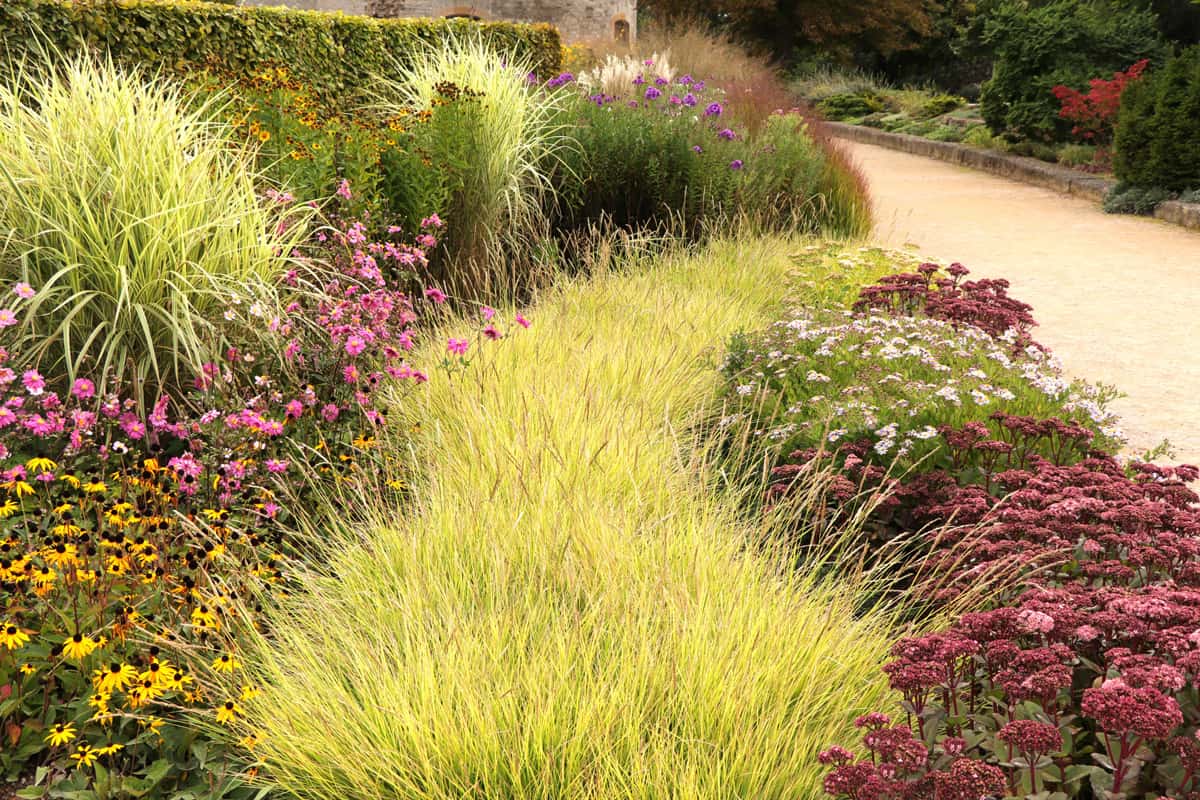
Here are some helpful tips to help you choose the ornamental grass that is appropriate for your garden:
- When choosing ornamental grass, consider if the variety is hardy in your climate.
- Check if the grass grows in clumps or tends to spread. This way, you can find a perfect location to plant and grow them.
- To encourage new growth, cut back ornamental grass in the late fall for a tidy look in the winter.
What Do Hardiness Zones Mean?

Understanding hardiness zones is vital in picking a plant for your garden that will survive the local winter. The USDA plant hardiness map is a geological map that divides North America into zones by the minimum average annual temperature.
Lower numbers indicate lower temperatures in that zone. Each zone represents ten degrees of temperature difference.
For example, zone 5 has winter temperatures between -10 and -20 degrees Fahrenheit, and it experiences mild summers and cold winters.
On the other hand, zone 4 has temperatures between -20 to -30 degrees Fahrenheit and comprises some of the coldest northernmost areas of the United States.
What Are The 'Sunset' Climate Zones?
If you live in the western US, you may want to use Sunset Climate Zones as it uses more than just the minimum temperature to grow a plant.
This map aids by giving you a clear picture of where your plants will thrive all year round.
This map factors in the following:
- Duration of the growing season
- Rainfall specifications
- Temperatures during summer and winter
- Humidity
If you are part of the western US, you might want to check out the sunset climate zone map as your guide in choosing the best plant.
To Wrap It Up
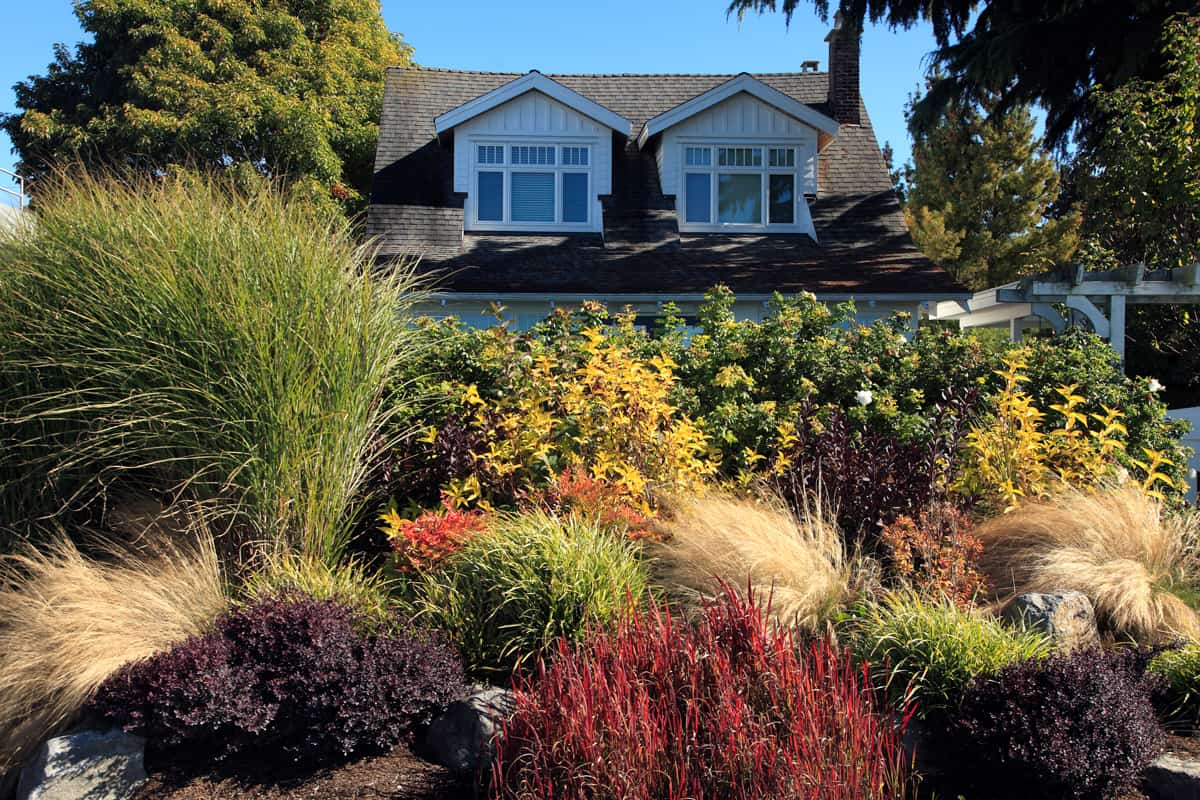
Sometimes, we go the extra mile to boost the beauty of our gardens.
Grasses are alluring additions to the garden if you pick the right one. There are several varieties of ornamental grasses; all fit for different seasons and spots in your garden.
When in zone 5, consider having the grasses we have listed for you. You can combine two to three of these grasses, depending on your style. Most are relatively easy to care for too!
If you found this post insightful, be sure to check out some of our other posts:
What To Do With An Unwanted Pond? [7 Awesome Ideas!]
11 Landscaping Ideas Around Bird Feeders
Can You Mow Over Lawn Netting? [And What Kind To Use]
